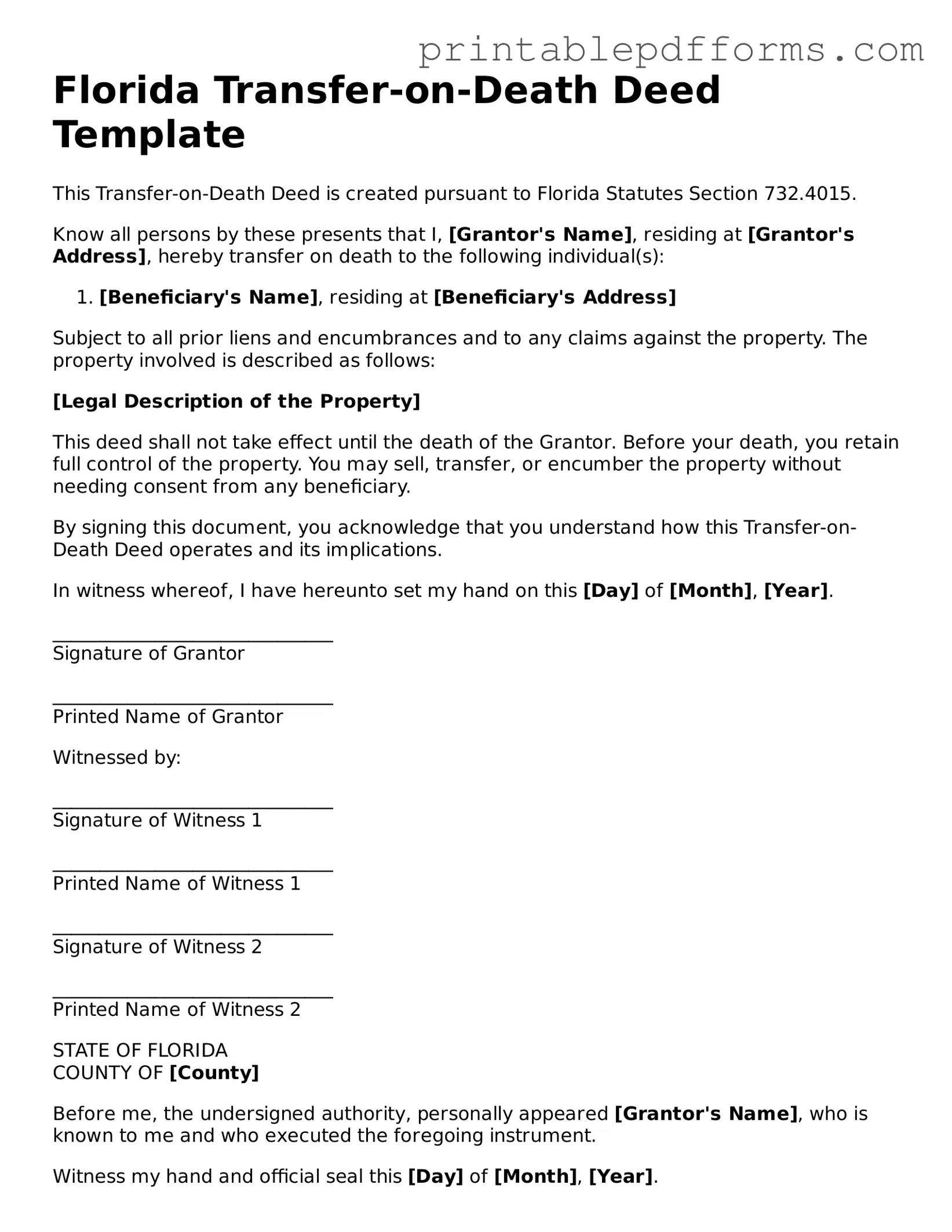Florida Transfer-on-Death Deed Template
This Transfer-on-Death Deed is created pursuant to Florida Statutes Section 732.4015.
Know all persons by these presents that I, [Grantor's Name], residing at [Grantor's Address], hereby transfer on death to the following individual(s):
- [Beneficiary's Name], residing at [Beneficiary's Address]
Subject to all prior liens and encumbrances and to any claims against the property. The property involved is described as follows:
[Legal Description of the Property]
This deed shall not take effect until the death of the Grantor. Before your death, you retain full control of the property. You may sell, transfer, or encumber the property without needing consent from any beneficiary.
By signing this document, you acknowledge that you understand how this Transfer-on-Death Deed operates and its implications.
In witness whereof, I have hereunto set my hand on this [Day] of [Month], [Year].
______________________________
Signature of Grantor
______________________________
Printed Name of Grantor
Witnessed by:
______________________________
Signature of Witness 1
______________________________
Printed Name of Witness 1
______________________________
Signature of Witness 2
______________________________
Printed Name of Witness 2
STATE OF FLORIDA
COUNTY OF [County]
Before me, the undersigned authority, personally appeared [Grantor's Name], who is known to me and who executed the foregoing instrument.
Witness my hand and official seal this [Day] of [Month], [Year].
______________________________
Notary Public
My commission expires: _______________
